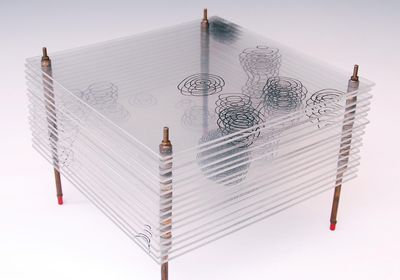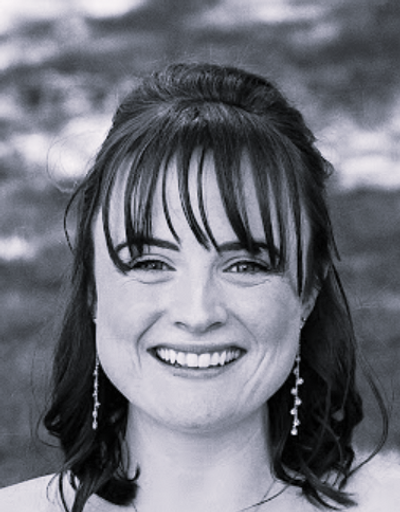ABOVE: Determining the molecular structure of penicillin paved the way for greater accessibility to the life-saving antibiotic. X-ray crystallography allowed scientists like Dorothy Crowfoot Hodgkin to determine the structure of essential molecules by capturing images of them in their crystalline form. WIKIMEDIA COMMONS, MUSEUM OF THE HISTORY OF SCIENCE, UNIVERSITY OF OXFORD
Dorothy Crowfoot Hodgkin, a pioneering chemist, outspoken leftist, and anti–nuclear war advocate, remains to this day the only British woman to have won a Nobel Prize in any science; she was awarded the honor in 1964 for her work deciphering the 3D structure of important biomolecules. Born in Cairo in 1910 and raised mainly in Britain, Hodgkin (then Dorothy Crowfoot) expressed an interest in scientific study and an aptitude for academics from the time she was a child, according to a biography updated in 2020.
Despite Hodgkin’s academic aptitude, her acceptance to the University of Oxford, where she studied chemistry, required a herculean effort on the part of her entire family. Being accepted to Oxford as a woman was difficult not only because the university had fewer spots for female applicants, but also because girls often did not receive sufficient education in required subjects; Hodgkin’s family and friends gave her crash courses in fields ranging from botany to Latin. Hodgkin went on to assist female students at Oxford in much the same way: giving them the resources and fighting for their chances to succeed in male-dominated fields.
After graduating in 1932 as only the third woman to earn a first-class chemistry degree from Oxford, Hodgkin began working in the University of Cambridge lab of molecular biologist (and communist activist) JD Bernal. While there, she began her pioneering work using X-ray crystallography, a technique that relies on X-ray imaging to determine the molecular structure of a crystal. Less than two years later in May 1934, Hodgkin coauthored a groundbreaking article in Nature that helped scientists decode the 3D structure of pepsin. X-ray crystallography enabled her and her team to arrive “at far more detailed conclusions about protein structure than previous physical or chemical methods,” according to the paper. Through the X-ray photographs, chemists could discern the atomic structures of complex proteins and other biological features for the first time.
In 1934, Hodgkin visited a doctor in London about growing joint pain in her hands. Hodgkin was eventually diagnosed with rheumatoid arthritis, an autoimmune disease that left her with chronic pain and, eventually, severely restricted mobility throughout her life. Hodgkin rarely mentioned her ailments. Hodgkin’s biographer, Georgina Ferry, tells The Scientist that Hodgkin “came [from] a generation that believed it was wrong to complain,” adding that Hodgkin once wrote in a 1944 letter to her husband that “it seemed ‘awfully slack’ to go home and rest when she was suffering a lot of sickness and bleeding in pregnancy.”
Hodgkin hoped for scientists to use their influence to improve the state of a Cold War–racked world.
Hodgkin’s grit through her own ailments resulted in life-changing discoveries for others with chronic illness, particularly through her work with insulin. Up until 1921, a diagnosis of type 1 diabetes was a death sentence. The discovery of a process for extracting insulin from the pancreases of animals saved the lives of countless people with diabetes, but the efficacy of these insulins remained variable in patients. Determining the structure of the molecule itself paved the way for the creation of a more stable version. In her 1935 Nature paper presenting X-ray crystallography images of insulin, Hodgkin noted that all previous attempts to photograph insulin had been unsuccessful due to the difficulty of preparing an adequate crystal of the biomolecule. Having already worked through this issue with pepsin, Hodgkin wrote that the crucial next step—resolving the molecule’s structure—“could be attacked in the same way [as pepsin] if large enough crystals could be grown.” But for many years, the structure of insulin eluded her.
While at Cambridge, Hodgkin finished her PhD and became a political activist alongside Bernal, her historian husband Thomas Hodgkin, and other scientists at Oxford and Cambridge. Although never an official member of the Communist Party, Hodgkin expressed sympathy toward communist beliefs throughout her career and founded the Oxford branch of a leftist organization called the Association of Scientific Workers in 1936. The following year, her marriage to Thomas was overseen by a communist vicar “who quoted Marx over the couple on the alter steps,” the biography reads. Her politics resulted in ostracization by the US government, following which she joined a delegation of scientists to the Soviet Union. Ferry says she never found “any documentary evidence that [Hodgkin] was a member” of the Communist Party, speculating that her choice came from a dislike of being labeled. Ferry notes that two prominent British leftists “didn’t believe me when I said she hadn’t joined the party.”
Meanwhile, Hodgkin’s physical pain increased. In her later years, Hodgkin’s hands locked up, her fingers overlapping. She hunched over, even when sitting, and she struggled with mobility Ferry notes. At the lab, she required an adaptive device created by her technician “for the main switch on the X-ray apparatus.”
Her disability didn’t prevent Hodgkin from working tirelessly or her career from flourishing. By the end of 1964, Hodgkin had determined the structures of penicillin and vitamin B12 and was awarded the Nobel Prize. And finally, she achieved the goal she’d long sought: In 1969, when she was 60 years old, and nearly 50 years after insulin’s discovery, Hodgkin and her team finally uncovered its molecular structure, paving the way for improved insulin synthesis and production.
In 1981, when Hodgkin was 70 years old, she published a call for international nuclear disarmament in the Bulletin of the Atomic Scientists. According to Ferry, Hodgkin was, at her core, an idealist who saw the possibilities for world peace inherent in the many socialist regimes that had risen throughout her life. Hodgkin hoped for scientists to use their influence to improve the state of a Cold War–racked world. Ferry writes in her biography that “there was no corner of the world to which Dorothy would not travel” because “her efforts were fueled by a hope, not always fulfilled, that as long as people could be brought face to face and talk through their differences, all problems could be solved.”
By 1981, despite decades of treatments that included gold injections and paraffin wax baths, Hodgkin’s arthritis had escalated to the point that she often needed a wheelchair to travel to conferences and airports. Nonetheless, she remained active and outspoken until her death in 1994.
Correction (April 10, 2023): This article has been updated to clarify details on Hodgkin's chemistry degree, the 1934 paper she published in Nature, and the biography written about her.
Membership Open House!
Enjoy OPEN access to Premium Content for a limited timeInterested in exclusive access to more premium content?




